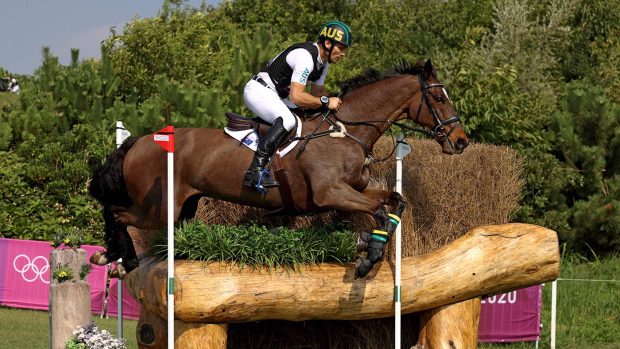A grassroots eventer and British Eventing (BE) fence judge has contacted H&H in support of the need for continued research into frangible fences after a fall at the Badminton Grassroots championships left her with several shattered bones in her arm.
Kathy Emery fell from her horse, Wizard IX, at the “out” part of a rail-ditch-rail combination during the BE100 Championship in May.
She said the frangible pin at the front of the fence failed to break when her horse hit it.
“I thought it seemed strange that the pin was fitted on the take-off side of the jump with solid posts behind the rail. Then, a month later, I saw pictures of Mary King at Bramham and noticed that the pins were fitted on the landing side,” she said. “My question is, why is this type of fence not always pinned on the landing side [reverse pinning] to offer greater protection from a rotational fall?”
Mrs Emery voiced her concerns to BE.
Safety officer Jonathan Clissold explained that the mechanics of a fall are complex and pointed out a horse can have a rotational fall without necessarily touching a fence.
“The frangible pin mechanism will only be triggered if a horse hits it with a force of more than 7.5kN [kilonewtons] — the threshold research has shown could be associated with a rotational fall — but there is no guarantee the pin will break every time,” he said.
The problem with reverse pinning, added Jonathan, is that “unless a rail is held tight up against the post it could slide down the pin, increasing the leverage and allowing the pin to break at very low vertical loads.”
But Andy Griffiths, international technical delegate, believes reverse pinning would be “100% more effective in this situation”.
He has called for the FEI to prioritise putting in place a universal standard so that a greater variety of frangible technologies can be utilised.
“There is an issue with reverse pins that means they can be triggered at low loads without the horse necessarily being in danger of falling,” he said.
“This causes hold-ups while they are replaced. Other technologies have been developed that are more effective, but until they can be certified and meet a pre-determined universal standard, their use is limited.”
Ref: H&H Thursday 4 December, 2014



